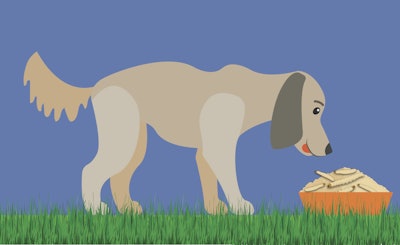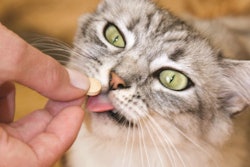
By 2030, pet food will comprise the second largest category of insect protein production, projected researchers at Rabobank; pet food’s 150,000 metric tons will rank only behind aquaculture’s 200,000. The food and agribusiness bank is predicting a total of 500,000 metric tons of production for animal consumption by then.
On its own, Ÿnsect, a producer of mealworm ingredients based in France, expects its total annual production capacity to exceed 254,000 U.S. tons following its acquisition of Protifarm, plus a third facility coming online. This accompanies significant facility expansions and openings by other companies such as EnviroFlight, Enterra and Protix.
Does this increase in production and investment mean insect protein is approaching mainstream for pet food? The fact that multinational giants like Nestle Purina and Mars have joined pioneers such as Jiminy’s, Josera and Entoma in taking insect-based pet foods to market—with new companies and lines launching all the time—certainly brings the category closer to a tipping point. And Jiminy's just landed distribution in 800 Petco stores in the U.S.
Another contributor: regulatory approval of the use of insects in pet foods, bolstered by increasing research on their nutritional and other benefits. In January 2021, an Association of American Feed Control Officials (AAFCO) committee approved the definition for black soldier fly larvae (BSFL) for use in adult maintenance adult dog food and treats, thereby giving it tacit approval by the Food and Drug Administration. (Full AAFCO membership approval is expected in August 2021, and BSFL approval for cat food, in 2022.) In the European Union, approval of insects as pet food ingredients has proceeded within the past few years.
Possibly the only remaining hurdle to widespread adoption is consumer acceptance. Research is under way to ascertain if pet owners in Western markets will buy pet foods incorporating insects as ingredients. For example, a University of Pennsylvania study showed U.S. pet owners were more willing to consider a pet food with something like insect flour versus dried whole insects. In all, 70% of the study participants were “willing to try insects in some form.”
That could be because consumers are also demanding sustainability in the products and brands they buy, and insect protein has a strong story to tell. First, it adds one more source of protein to the world’s supply as pet and human populations increase. Plus, insect production has been shown to use substantially less land and water, somewhat less energy and to create much less waste than traditional livestock production.

















